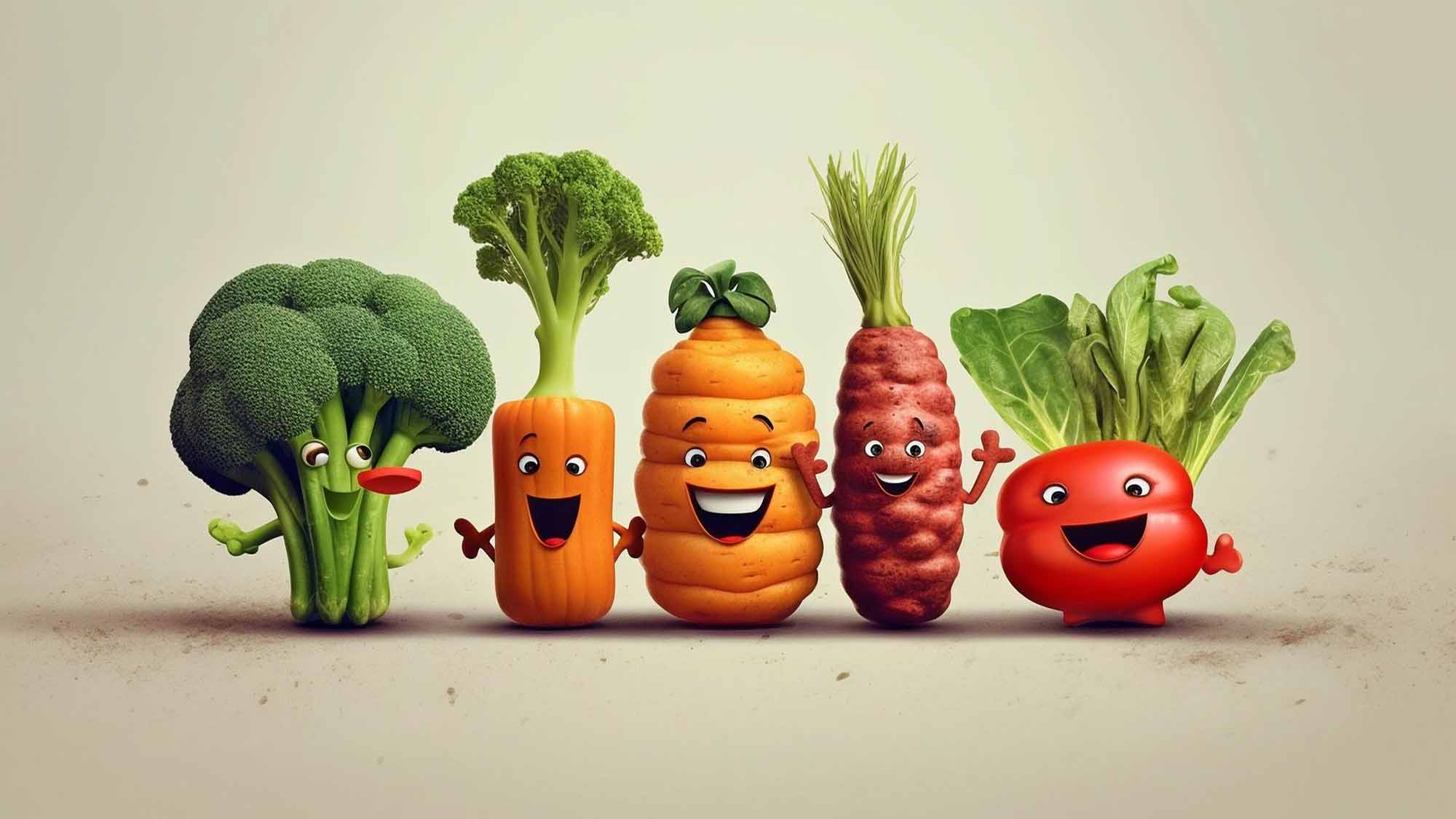20 Fun - And Delicious - Ways to Eat More Vegetables
03 Nov 2023

Shying away from eating veggies seems like something you're more likely to do as a kid, but it's an eating habit that can follow you as you grow. The amount of vegetables you should include in your diet varies depending on your age and sex assigned at birth, but it's well above zero. In fact, two to four cups per day is the average recommended amount for adults. However, according to the CDC, only 10% of adults meet their daily vegetable intake.
A closer look makes it easy to see why this might be the case. Some people grew up on vegetables cooked in ways that made them less flavorful, and kids are legendary for hating vegetables. Other people are simply picky eaters, so there may be fewer vegetables in their diet. There's just one problem, though: You're missing out on excellent vitamin A, fiber, and potassium sources if veggies aren't on your plate. And that's just the start of the nutritional value you're skipping over when you pass on the veggies!
Fortunately, there are many delicious ways to eat more vegetables due to the sheer amount of creative ways you can prepare them. We've listed 20 ideas below.
1. Make a hearty vegetable soup
Eating two to four cups of vegetables daily is much easier to achieve when you add veggies to savory soup recipes. Leafy greens can make excellent additions to thinner soups, while you can reach for potatoes or green beans for cream-based soups. If making a veggie soup from scratch isn't your thing, you can look at several ready-made vegetarian meal delivery options for a variety of hearty vegetable soups and other veg-packed meals.
2. Try veggie noodles
Vegetables can make for uniquely delicious substitutes for regular noodles in your favorite pasta dish. Veggie noodles are easy to make too. Run whatever vegetable you'd like through a spiralizer to change its shape into something close to pasta. From there, throw them in with your favorite pasta sauce and enjoy a delicious meal.
3. Dunk your veggies in a tasty dip
Properly washed and dried, raw vegetables can make for an excellent on-the-go snack and get you one step closer to meeting your recommended daily servings. Having raw vegetables on their own might not appeal to you, but having dip like hummus on hand can make veggies much more palatable.
4. Throw vegetables into a sandwich or wrap
Another easy way to eat vegetables is to add some into every sandwich or wrap you make for lunch. It's quick and easy to do and lets you be a little creative with what you add. Want a bit of roughage? Add a handful of spinach. Are you looking to add some subtle sweetness? Sliced sweet potatoes are the way to go. The sky's the limit.
5. Blend into smoothies
Rather than cooking vegetables, try turning them into green smoothies. Most people think of fruit when making smoothies, but veggies with high water content, such as celery, cucumber, or kale, work well too. And if you aren't sure about the taste, add a banana or mango to the mix for a natural sweetener.
6. Roast and season your vegetables
Many people get used to eating steamed, and maybe lightly salted, vegetables when they're kids and end up avoiding them into adulthood. But there are plenty of ways to prepare veggies that make them more flavorful. For example, chop some veggies, put them on a pan with a drizzle of olive oil and your favorite spices, and roast them in the oven. This leads to some nice caramelization, with vegetables that are crisp on the outside and tender on the inside.
7. Add some to breakfast
To prepare breakfasts with extra nutrients, add a few servings of vegetables to your morning routine. Veggies can taste great added to some of your favorite breakfast recipes while adding fiber to help keep you full throughout the day.
8. Use a grill
Cooking vegetables over the grill gives them a char that brings out their natural flavors, making them more enjoyable to eat. It's fairly easy to grill low-water vegetables such as potatoes, carrots, or onions.
9. Make vegetable sauces
Dice up veggies and add them to homemade sauces to sneakily add them to your diet, The tomato base masks their taste, and you get vibrantly flavored sauces to add to your favorite pasta dishes.
10. Use lettuce wraps or veggie buns
You can save on carbs and add more essential nutrients to your diet if you replace standard tortillas or hamburger buns with vegetables. Lettuce is an excellent stand-in for your favorite taco or quesadilla breads, while you can substitute a wide variety of veggies for buns. Portabella mushroom caps, sliced sweet potatoes, or halved bell peppers can make unique caps for your next burger too.
11. Switch to non-meat patties
Rather than replacing the buns on your burger, why not replace the patty itself? There are plenty of veggie burger brands out there that use black beans or potatoes in place of red meat. While they may not taste the same as beef, they can still make for a delicious meal that adds veggies to your diet.
12. Cook up some stuffed bell peppers
Cut the top of a bell pepper off and stuff it with meat, beans, and rice. Throw it in the oven, and you've got a classic stuffed bell pepper recipe that can make for a delicious meal at lunch or dinner. There's a lot of room for creativity in the fillings, and the pepper shell includes several essential vitamins and minerals.
13. Add veggies to your next meatloaf
Your usual meatloaf combines egg, breadcrumbs, tomato sauce, and your favorite type of meat. But you can make just about any recipe your own, and meatloaf is no exception. Experiment with adding some chopped veggies the next time you make one - you might be surprised how much you like it..There are even recipes for a hearty "meatloaf" that's completely veggie-based, using chickpeas instead of meat.
14. Substitute cauliflower rice
Pulsing cauliflower florets in a food processor separates them into smaller granules that you can substitute for standard rice. Cauliflower is significantly lower in carbs than rice and high in vitamin C, vitamin K, and folate.
15. Add a side salad to every meal
A few leafy greens and some homemade salad dressing make for a healthy side during lunch or dinner. Salads are fast to make and highly customizable, so you can get a dish that's exactly to your liking. You can even have salad with your breakfast - just add a few pieces of fruit to a bed of arugula.
16. Don't overlook frozen veggies
The issue many people have with using vegetables in their meals is that they can make prep time last a bit longer than they'd like. In particular, washing, slicing, and dicing veggies can make dinner take noticeably longer to reach the table. Frozen veggies, though, come ready to throw into your favorite meal. Plus, they last longer, so you can always have healthy ingredients on hand.
17. Whip up homemade veggie chips
Making vegetables as convenient as possible to eat is an excellent way to reliably incorporate them into your diet. There are few things more convenient, of course, than grabbing chips out of a bowl. Roasting or air-frying thin slices of kale, sweet potatoes, or Brussels sprouts with a light sprinkling of salt makes for a quick and easy snack.
18. Prep veggies for the week
Another convenient way to get your recommended servings of vegetables is to prepare fresh produce throughout the week. Plan what you want to eat for the week and set aside time to dice, slice, or mince all the veggies you'll need. Then, all you have to do is pull them out and add them to your meals as needed.
19. Bake veggies into desserts
While dessert shouldn't be the main way you add more vegetables to your diet, it's certainly an option. In fact, there are plenty of veggie-based desserts out there, such as carrot cake or zucchini bread. Simply find one you'd like to try and have it as a sweet bonus to a healthy lunch or dinner.
20. Double your portion size
Putting more vegetables on your plate might not be the most appealing option. However, this helps you get the nutrients your body needs in one fell swoop. Double your portion of veggies, and you could be done for the day, nutritionally speaking. You can add some variety and cook two different vegetables to have as sides. With more on your plate, eating as much as your body needs becomes much more manageable.
Add more vegetables to your diet with Meal Village
There are plenty of reasons why you might not be getting as many vegetables in your diet as you need - and plenty of reasons to change that. Vegetables are the source of many good vitamins and minerals your body needs to function optimally. Put simply, regularly eating veggies is essential for your health.
Maybe, though, you never got a taste for veggies, or maybe you just don't like how much time they take to prep. Well, the expert chef team at Meal Village is ready to help.
Meal Village offers a no subscription meal delivery service that's perfect for those who desire fresh, veg-rich meals without the commitment. Our rotating menu ensures you have a variety of vegetable-loaded options to choose from, making it easier to meet your daily veggie quota.
Simply pick what you want from our rotating menu, and we'll cook it with fresh, locally sourced produce and really make the flavors shine. Order now online or by phone, and we'll have a nutritious, delicious, ready-to-eat meal at your door in no time.



